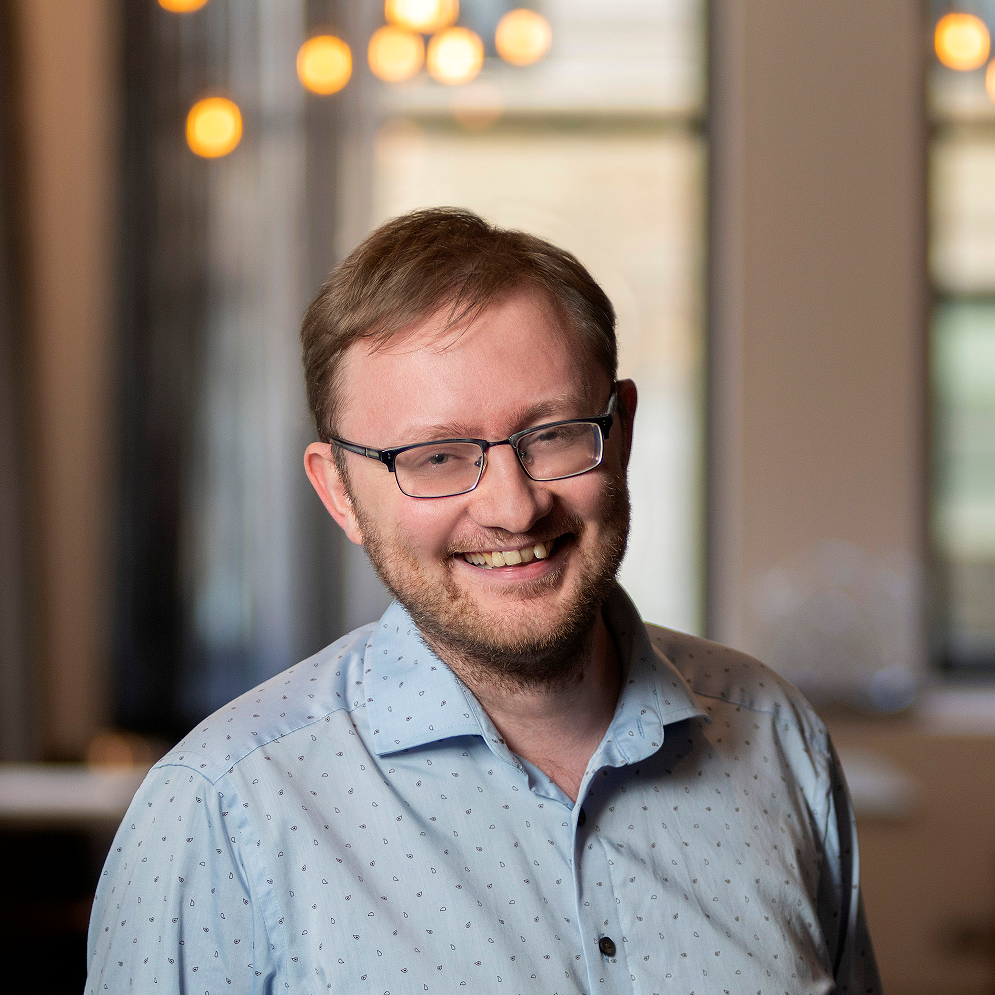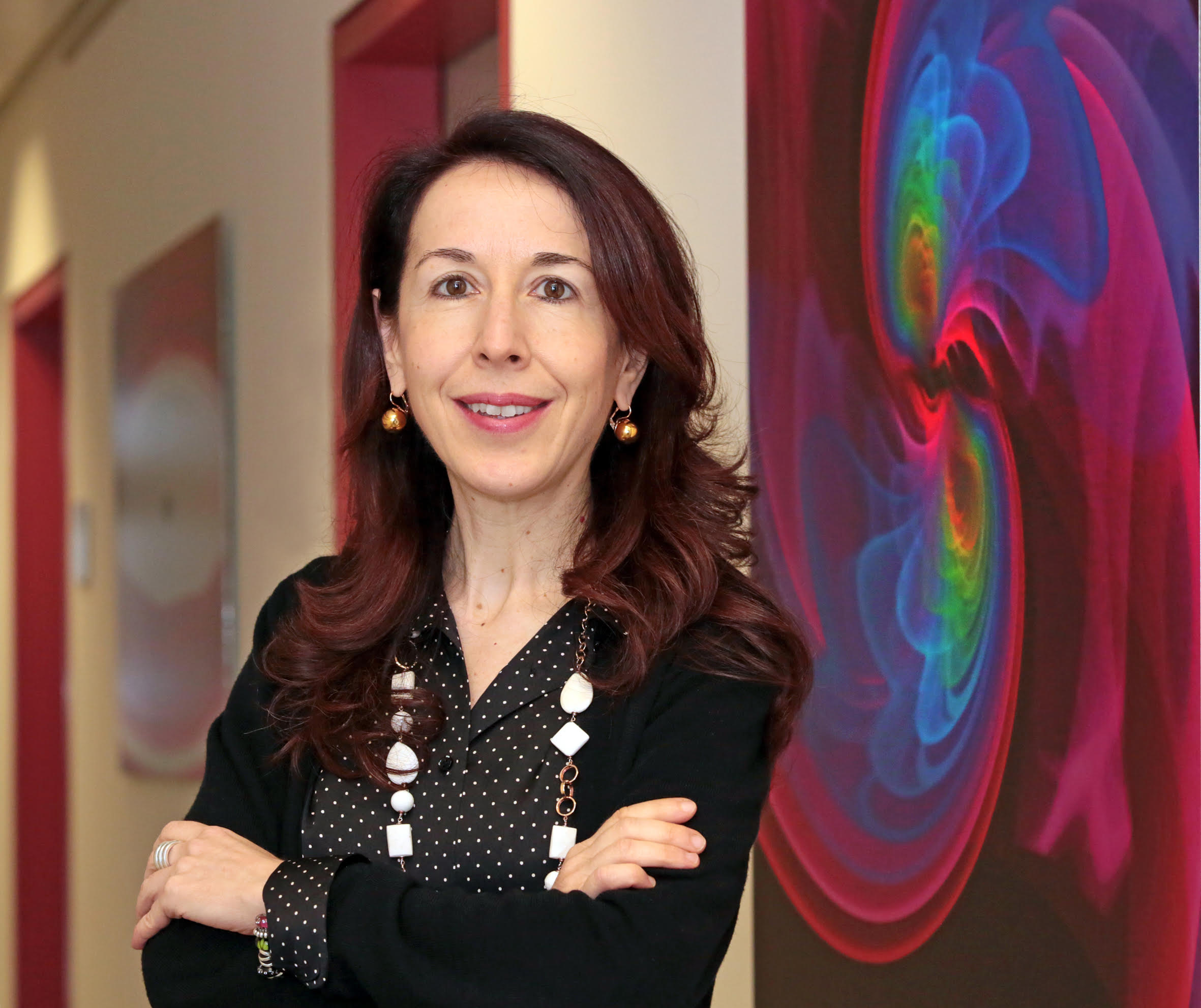Sasha Philippov Investigates Plasma Around Black Holes and Neutron Stars
- Details
- Category: Department News
- Published: Thursday, September 07 2023 19:34
Curiosity about the cosmos has attracted many young astrophysicists to their careers, but that was not the case for Alexander “Sasha” Philippov. While growing up in Russia, he was a natural at science and even competed in the national Physics Olympiad for high school students. However, his interests at the time were more down-to-earth. Sasha Philippov
Sasha Philippov
“I was not into astrophysics whatsoever,” said Philippov, who joined the University of Maryland’s Department of Physics as an assistant professor in May 2022. “When I went to college, I was hoping to do theoretical particle physics, but my advisor and mentor, Professor Vasily Beskin, showed me that you can do very interesting, detailed modeling in astrophysics. It looked like real physics to me—not just looking into a telescope and watching the stars.”
Philippov has been starstruck ever since, using a combination of theory and computer modeling to tackle big questions in high-energy astrophysics and publish over 60 papers.
After completing his undergraduate studies at the Moscow Institute of Physics and Technology, he earned a Ph.D. in astrophysical sciences from Princeton University in 2017. It was during his graduate studies that he started specializing in the physics of plasmas—a state of matter comprising hot, ionized gas that surrounds “some of the most mysterious and exotic objects in the universe,” including black holes and neutron stars, Philippov said.
He was then named a NASA Einstein and Theoretical Astrophysics Center Fellow and completed his postdoc at UC Berkeley, where he co-developed computer code to model the behavior of charged particles around rotating black holes.
“This sort of thing had never been modeled before, because you need to take into account the effects of general relativity, how the electromagnetic fields are modified by the spinning black hole and how they react to the dynamics of charged particles,” Philippov explained. “Ours was the first code that could do it.”
His code enabled a flurry of studies—including five publications in the journal Physical Review Letters—which offered new insights into the extraction of energy from rotating black holes, the production of electron-positron plasmas and electromagnetic flares near the event horizons of black holes, and the accretion of collisionless plasma.
After his postdoc, Philippov worked as an associate research scientist at the Simons Foundation’s Flatiron Institute in New York City, where he continued to study the emission mechanisms of pulsars—magnetized neutron stars that rapidly rotate. During this time, he constructed the first models capable of explaining the mysterious coherent emission of pulsars, which were found to produce relativistic lightning strong enough to shoot beams of radio waves out into space. Although this cosmic phenomenon was discovered more than 50 years ago, its cause was not fully understood until Philippov’s study.
Recently, he was named deputy director of a multi-institutional Simons Foundation project called the Simons Collaboration on Extreme Electrodynamics of Compact Sources (SCEECS). The team will model electrodynamic processes related to neutron stars and black holes, which have magnetic fields that are 10 billion times stronger than those associated with the Large Hadron Collider in Switzerland.
The group will use kinetic plasma simulations and large-scale fluid-type modeling to study the underlying emission mechanisms of magnetars—neutron stars with the strongest magnetic fields—and spinning black holes. Advances in high-performance computing and telescope technologies help make this work possible.
“It’s a big investment for research that is completely theoretical,” Philippov said of the grant. “We will be looking at a collection of both completely new and very old problems—the latter having been revitalized by the power of computer simulations and new observations. It’s a great time to do this.”
Philippov also recently received a $600,000 grant from the National Science Foundation to support the modeling of phenomena in extreme plasmas around black holes and neutron stars. In addition, he continues to study the radiation of neutron stars (including enigmatic fast radio bursts), flares from accreting supermassive black holes and merging neutron stars, and particle acceleration in jets produced by black holes.
As a Fellow in the Joint Space-Science Institute (JSI), a collaboration between the NASA’s Goddard Space Flight Center and UMD’s astronomy and physics departments, Philippov is helping to organize a workshop in October 2023 that will share the latest expertise on “winds throughout the universe,” including everything from the sun’s powerful wind to the gusts produced by merging neutron stars.
In his day-to-day work, Philippov works closely with students and postdoctoral fellows and said he “tremendously enjoys mentoring and interacting with early career researchers.”
Though he was not instantly smitten with astrophysics as a high school student, he is happy he pursued this career path. For him, having the chance to ponder big questions in astrophysics—and better yet, to answer them—is what continues to drive his research.
“The time that you get to study something completely new is why we are in this business,” Philippov said. “The joy of getting to finally understand something after a long time is remarkable.”
Written by Emily Nunez.
